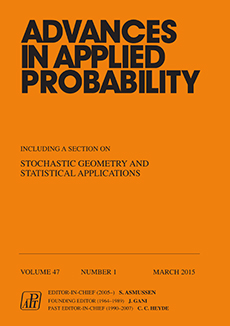Abstract
We introduce a discrete-time microscopic single-particle model for kinetic transport. The kinetics are modeled by a two-state Markov chain, and the transport is modeled by deterministic advection plus a random space step. The position of the particle after n time steps is given by a random sum of space steps, where the size of the sum is given by a Markov binomial distribution (MBD). We prove that by letting the length of the time steps and the intensity of the switching between states tend to 0 linearly, we obtain a random variable S(t), which is closely connected to a well-known (deterministic) partial differential equation (PDE), reactive transport model from the civil engineering literature. Our model explains (via bimodality of the MBD) the double peaking behavior of the concentration of the free part of solutes in the PDE model. Moreover, we show for instantaneous injection of the solute that the partial densities of the free and adsorbed parts of the solute at time t do exist, and satisfy the PDEs.
Citation
Michel Dekking. Derong Kong. "A simple stochastic kinetic transport model." Adv. in Appl. Probab. 44 (3) 874 - 885, September 2012. https://doi.org/10.1239/aap/1346955268
Information





